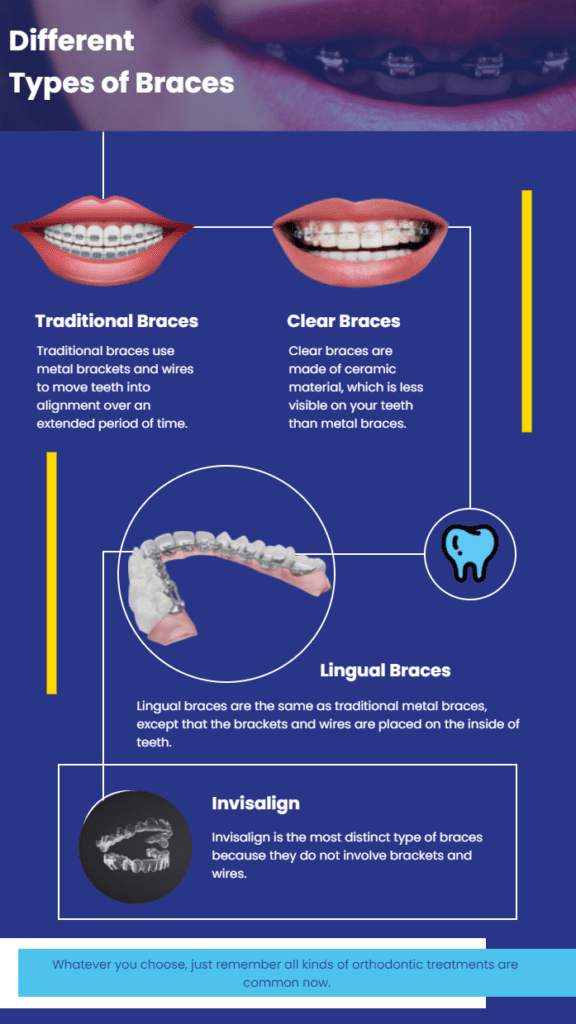Comprehensive Guide to Orthodontics Treatments for Correcting Oral Misalignments
Recognizing the ins and outs of each procedure, including their mechanisms, advantages, and prospective drawbacks, is important in making informed choices regarding one's orthodontic treatment. As we navigate through the comprehensive guide to orthodontic treatments for correcting dental misalignments, the elaborate details of each method will certainly unravel, shedding light on the course towards a unified and practical dental alignment.
Orthodontic Procedures Summary

In enhancement to typical dental braces and clear aligners, orthodontists may likewise advise other treatments like headwear, palatal expanders, or retainers to address details positioning problems (cumming aligners). These treatments are customized to every person's special needs and may entail a combination of treatments to achieve the desired results. Normal modifications and tracking are essential parts of orthodontic therapy to ensure progression is on track and to make any type of needed adjustments in the process. By going through orthodontic treatments, clients can not only accomplish a straighter grin yet likewise improve their total dental health and wellness and feature.
Conventional Dental Braces: Just How They Function
When thinking about orthodontic treatments for dental misalignments, traditional braces attract attention as a reliable method for remedying teeth placing. Traditional braces include braces, cables, and bands that interact to apply continuous stress on the teeth, slowly moving them right into the preferred placement. The brackets are affixed to the teeth using an unique adhesive, and the cables are threaded via the brackets. By changing the stress of the wires, orthodontists can manage the instructions and pressure applied to each tooth, guiding them right into correct placement over time.
One secret facet of how typical dental braces work is the process of bone remodeling. As stress is related to the teeth through the braces, the bone bordering the teeth is reshaped to sustain the brand-new tooth positions. This improvement is essential for the long-lasting security of the remedied positioning. Patients will certainly require normal adjustments at the orthodontist's workplace to make certain the braces remain to apply the correct pressure for effective teeth motion.
Unnoticeable Aligners: Cons and pros
Undetectable aligners use a very discreet and practical choice to traditional braces for correcting oral imbalances. These clear, custom-made trays are virtually unseen when worn, making them an appealing choice for individuals looking for an extra aesthetically pleasing orthodontic therapy. One of the main advantages of invisible aligners is their removability, permitting less complicated maintenance of oral hygiene compared to traditional dental braces. Clients can remove the aligners prior to consuming or brushing their teeth, minimizing the danger of food getting stuck in the appliance and streamlining the cleansing process.

Surgical Orthodontic Options
Surgical treatments in orthodontics present practical alternatives for attending to intricate oral misalignments that may not be properly dealt with with traditional orthodontic therapies. While typical dental braces and invisible aligners can correct many orthodontic issues, certain cases call for surgical intervention to attain ideal results. Surgical orthodontic choices are normally suggested for severe malocclusions, considerable jaw inconsistencies, and situations where the underlying bone structure needs alteration to achieve proper placement.
One typical surgical orthodontic procedure is orthognathic surgical treatment, which involves rearranging the jaws to correct practical issues such as problem talking or chewing. This surgery is commonly executed in partnership with an orthodontist that helps align the teeth prior to and after the procedure. Surgical orthodontics may additionally entail treatments to subject impacted teeth, get rid of excess periodontal cells, or reshape the jawbone to produce an extra harmonious facial account.
Before taking into consideration surgical orthodontic alternatives, people undertake an extensive assessment to determine the need and possible advantages of such interventions. aligners. While surgical procedure may appear daunting, it can substantially boost both the function and visual appeals of the smile in instances where conventional orthodontic therapies drop short
Retainers and Post-Treatment Treatment

Failing to abide with post-treatment care guidelines can result in regression, where the teeth progressively relocate back towards their original positions. Consistent retainer wear, good oral health, and routine oral check-ups are vital for preserving the results accomplished through orthodontic surgical treatment and making certain the long-term stability of the remedied dental alignment.
Conclusion
To conclude, orthodontic procedures provide different choices for dealing with dental imbalances. Typical dental braces use metal brackets and wires to shift teeth right into correct alignment. Undetectable aligners supply an even more very discreet choice yet may not appropriate for all cases. Surgical orthodontic options are readily available for much more severe imbalances. Retainers are frequently used post-treatment to preserve the brand-new placement. In general, orthodontic procedures can efficiently enhance oral wellness and aesthetic appearance.
As we navigate through the detailed guide to orthodontic procedures for remedying oral misalignments, the elaborate details of each approach will certainly unfold, shedding light on the course how to find a new dentist towards a unified and functional dental alignment. - cumming braces
One of the most typical orthodontic treatments is the use of dental braces, which are composed of steel brackets and wires that apply gentle pressure to progressively shift teeth into the desired position.When thinking about orthodontic treatments for here oral imbalances, conventional braces stand out as a reliable method for correcting teeth placing. In addition, invisible aligners may not be ideal for complex orthodontic issues that call for more significant teeth motion, as they are normally recommended for moderate to moderate situations. Retainers are customized orthodontic devices developed to hold teeth in their remedied positions after the completion of orthodontic therapy.